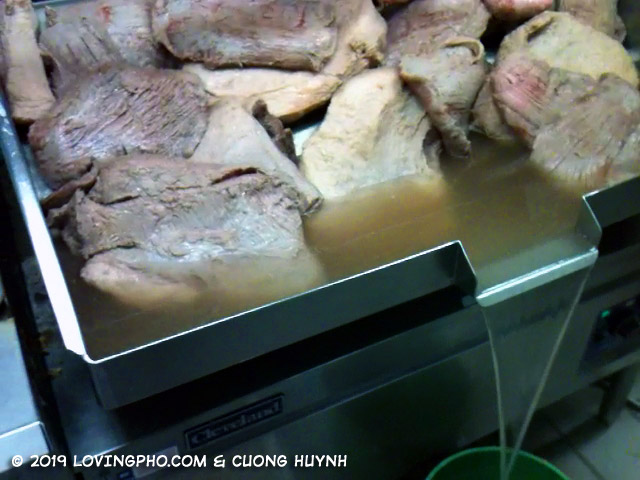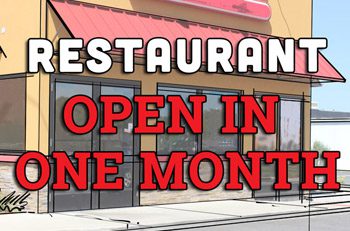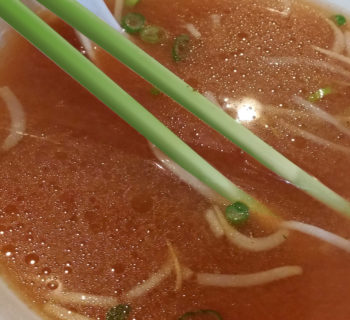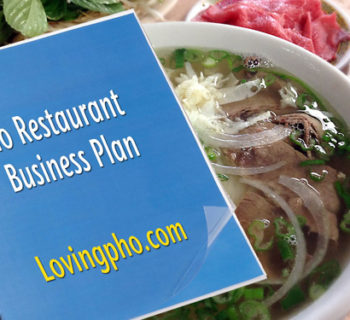A question comes up in the Pho Forums about restaurant kitchen efficiency. It's about how the whole process of making beef pho broth can be made more efficient. In particular, the discussion gravitates toward specifically the parboiling and simmering portion of the process since these seem to take the most time.
I get it. When you run a restaurant, efficiency (making it easier, doing it faster, taking less time, doing it less costly, etc.) is everything. So this is an excellent question. A good pho kitchen operation should always be looking for shorter/easier/quicker ways to do things, as long as quality and safety are not compromised.
Efficiency in Parboiling and Simmering
To make pho broth (beef), the following steps are generally followed:
- The bones and meat are first parboiled quickly (~5 minutes) to remove impurities.
- They are then drained and rinsed/washed thoroughly.
- They then are brought back up to boiling.
- And finally they simmer for whatever amount of time called for in the recipe.
There are implied steps in between such as draining and cleaning up, but for now we'll stay with just the recipe instructions.
Take the steps of parboiling and simmering. Each requires bringing water to a boil. The question here is, when it comes to parboiling and simmering, what does efficiency really mean?
Being able to boil water quickly is a big plus for both these steps. Boiling water takes a lot of time, and it actually is a function of many things including BTU ratings of the burner, the pot/vessel shape and material, and altitude above sea level (many don't realize this), among other things.
So if reducing boiling time means reducing production time, then it is one excellent way to improve efficiency.
Again, do realize that boiling time is not the only factor that impacts overall efficiency. It's just the front end portion. There are other factors just as important to consider, such as the back end portion of winding down and cleaning up. For now, we'll concentrate on the front end and break it down further in the next section. This way you'll see the whole process to figure out efficiency. Once it is well understood, the same principles can be applied the other portions of the process.
What It Takes to Boil Some Water
Boiling water is a simple task. Your recipe may say something like "Bring 20 gallons of water to a hard boil".
The purpose may be to parboil something, or to actually cook something. It doesn't matter for now as I just want to focus on just the boiling process to illustrate some important considerations about efficiency.
An experienced staff in a commercial kitchen may do the following to perform this task:
- Select a clean pot/vessel with capacity of more than 20 gallons. Preferably the pot should be 30, even 40 gallons or maybe larger capacity depending what will actually be cooked in it.
- Wash pot as necessary.
- Fill pot with 20 gallons of clean, preferably hot water.
- Transport pot and place it on a floor burner and turn to maximum heat.
- The water boils and you determine you've achieved boiling water.
Now, to carry each step above you have to have these 2 things:
- A piece of equipment/tool for the job, and
- The process to perform that job/step.
If you missed it, I'll repeat: To perform each of these steps you have an opportunity to choose a) the equipment and b) a process to do the job.
It's clear that you always have a choice, but choose wrong, and you lose efficiency.
A sharp operator would always choose the combination of equipment and process that is optimized for quickest, safest, "most efficient", or least costly to do that step.
Not All Results Are Created Equal
The end result of achieving boiled water is always the same; water boils at 212°F or 100°C. But not all results are created equal.
Efficient operations can get to 20 gallons of boiled water quickly, safely, and with less effort and manpower. Inefficient operations can get 20 gallons of boiled water as well, but they may take longer, require a lot more effort and manpower, and may risk employee safety considerations.
But it doesn't mean you should always strive for high efficiency. Instead you should strive for high efficiency with the least investment (effort, cost, time). This will give your the best return on your investment (ROI).
Time to Boil 20 Gallons of Water
We'll break this part down this way.
| Description | Task Time - Low End | Task Time - High End | Comments |
|---|---|---|---|
| Steps 1 and 2 Acquire and wash pot | ~1 minute (No pot washing) | ~10 minutes (Need pot washing) | May take 1-10 minutes depending on where the pot/vessel is stored, whether it needs to be washed and cleaned, whether you have a large enough sink to wash it in, and how fast a person can wash a bulky item. Assumption: one way walking distance no more than 30 feet. |
| Step 3 Filling pot with water | ~11 mins 7 secs | ~11 mins 7 secs | This is dependent on flow rate of your water tap. At a maximum of 1.8 gallons per minute or gpm (California Plumbing Code, if you're in California) you're looking at about 11 minutes and 7 seconds to get 20 gallons into your pot. |
| Step 4 Transport pot to burner and turn on burner | ~1 minute | ~2 minutes | Assumes a cart is used to transport and 2 persons lifting/handling filled pot. |
| Step 5 Boil water | ~45 minutes | ~1 hour 10 minutes | Cook time is highly dependent on your stove or cooking equipment and its BTU rating. Commercial floor burners can do it in about an hour (if you have very high BTU). Otherwise you'll likely need more than an hour. |
| Total time | ~58-59 minutes | ~1 hour 33 minutes |
Note that working with 20 gallons of water means you're working with almost 167 pounds of sloshing liquid, not including the weight of the pot itself. So lifting and handling it requires at least 2 people, and transporting most definitely requires a cart. This is the front end of boiling water.
The back end water boiling is draining this same pot with meat and bones in hot boiling water. The time requires for this will be at least 3 times the front end.
Adding the time for all steps, you're looking at from one hour to one and a half hour (1 to 1 hr 30 min) to boil your water.
Next Step: Total Time to Parboil Meat and Bones in 20 Gallons of Water
So that was just boiling water. The total times to carry out all parboiling steps involving 20 gallons of water are shown below.
| Task | Time Required | Comments |
|---|---|---|
| Bring water to boil from Time to Boil 20 Gallons of Water table | ~1 hr to 1 hr 33 min | |
| Add meat and bones to boiling water | ~5-15 min | Depends on proficiency and preparedness of staff |
| Parboil meat and bones | ~5 min | |
| Remove and drain pot | ~10 to 20 min | Depends on proficiency and preparedness of staff |
| Wash hot meat and bones | ~10 to 15 min | Depends on proficiency and preparedness of staff |
| Wash pot and start cooking/simmering steps | 0 | This is start of the next steps/process to cook/simmer broth |
| Total time to parboil | ~1 hr 30 min (low end) ~2 hr 30 min (high end) |
So, it would take 1.5 to 2.5 hours just to complete the parboiling steps of making beef pho broth.
Bottom Line on Efficiency
You can do similar calculation to come up with your actual simmering/making the broth.
- For a recipe calling for 3-hour simmer, you're looking at roughly 5 to 5.5 hours of actual total time required.
- For a recipe calling for 6-hour simmer, it's closer to 9 to 9.5 hours total.
If you as a pho restaurant operator do this day in day out, or even only 2-3 times a week, you owe it to yourself and your business/partners/family to do this as efficiently as possible.
If you can shave off 10 minutes from your process, you're actually eliminating more than 60 wasted hours per year. Think of what those 60 hours per year is costing you, not just in labor, inefficiency, and production costs but also in opportunities lost. One can do a lot with that extra 60 hours a year.
By the way, professional restaurateurs also do what I call recipe optimization. So what is it you ask? Among other things, it's to minimize BOTH the amount of ingredients required AND the steps/time to prep, cook and serve a given menu item! Making the connection yet? Amazing, right?
On a practical level, what does this all mean? Well it's all about choosing the right equipment and process, as already mentioned above. Here's what you do.
Process
In order to achieve your efficiency targets, here are some tips to tighten up your process, or to just get it organized:
- First define or quantify your efficiency goals (time it takes, number of people required, safety measure, etc.).
- Next you need to choose the right equipment within your budget to do the job.
- Then create a process you and you staff must follow to use your equipment to achieve your goals.
- Monitor and measure results and performance, with top priority given to the best tools/investment combination.
- Make necessary adjustments to continuously improve.
- Implement this as standard mode of operation.
Equipment
Following are some tips for selecting the right equipment:
- Choose the right equipment that will both fit your budget and allow you to follow your process above. Get the help of a consultant if you're not knowledgeable and can't learn it yourself.
- Choose equipment that eliminates or at least minimizes the manual portions of the process (lifting, handling, fill up water, transporting, etc.). You'll not only do things more quickly and safely, you'll also cut down on labor cost as well. Again, get help if you don't have the right knowledge.
- Invest time and learn to be proficient and expert user of the equipment.
- Maintain the equipment for top and trouble-free performance per manufacturers' recommendations.
- Be willing to invest more upfront on the right equipment to ensure continued benefits from subsequent years of smooth operation.
There are a lot more that can be said about process design and equipment selection, but we're getting outside the scope of this post. I'll save them for a future one.
While this is only a simple water boiling exercise, it serves to illustrate how you as a pho restaurant operator can be more efficient in all aspects of your operation, and more importantly, can systematically identifying problems and work out solutions to those problems.
Imagine everything else that needs to happen every day in your restaurant, and think about how they can add up to A) an efficient operation or B) one that is full of waste and, worse yet, is unknown or invisible to the owner. That's not what we call a successful restaurant business by any standard.
Sadly I run into a lot of the latter case.
For help with your pho restaurant, book a one-hour pho restaurant consultation and get your questions answered.




